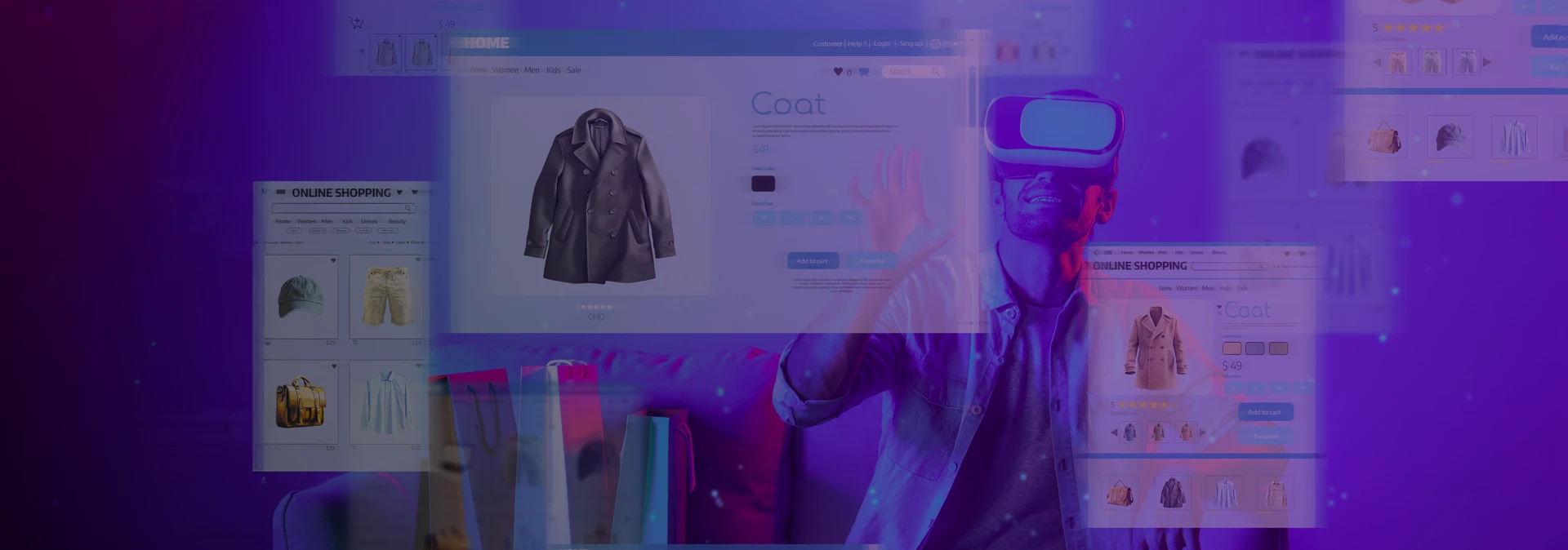Apologies for the gap since our last post on “The Building Blocks of Hyper-Personalization.” We’re back on, continuing the conversation. Today, we’re exploring how brands can move beyond personalization to build deeper, more meaningful connections. Without further delay, let’s dive in. Grab your coffee; I think this one’s worth the read.
Introduction: the next frontier of experience design
We live in a world where brands know us better than some of our closest friends. They recommend what we might want to watch before we even sit down with popcorn. They nudge us with the perfect offer just as we’re thinking of upgrading. They send us emails addressed by name, featuring products we browsed at 11:47 PM the night before.
This is the power of
hyper-personalization, a game-changer that has transformed how companies engage with customers. But here’s the paradox: while personalization has become table stakes, it’s no longer enough to win hearts and loyalty.
According to a 2019 report, Gartner predicted that by 2025, 80% of marketers who had invested in personalization would abandon their efforts due to a lack of ROI and the risks of over-targeting. And today, we are racing towards that moment. We’re seeing brands scale back or scrap personalization strategies that fail to build genuine connections because when personalization feels like manipulation, customers disengage. People want more than convenience; they want to feel truly understood.
The next frontier is not just about knowing who your customers are. It’s about making them feel seen, valued, and inspired.

The problem with over-personalization
Personalization was once a delightful surprise. Now, it’s often just… expected. Worse, when it crosses the line, it can feel creepy.
Think about it:
- Ever been followed around the internet by that one pair of sneakers you looked at once?
- Or received a birthday discount from a brand you bought from years ago but never heard from the brand since?
Apple captured this unease brilliantly in its “Flock” advertisement, where swarms of flying cameras relentlessly shadow people throughout their day-to-day activities, spying on their grocery choices, financial transactions, and even private conversations. It’s only when they activate Apple’s privacy control that the intrusive cameras vanish.
The message was simple but powerful: while technology can feel omnipresent, trust and control matter more than constant tracking. The ad resonated globally because it dramatized what many customers already sense, that personalization without boundaries isn’t convenience, it’s surveillance.
This isn’t just clever and creative but also connects users with empathy. Research by SmarterHQ reveals that 86% of consumers claim personalization influences their purchasing decisions, yet over 70% also report feeling uncomfortable with overly invasive personalization.
The balance is delicate: done right, personalization induces trust. Done wrong, it erodes it.

From personalization to connection: the Human shift
So how do we move from just targeting customers to truly connecting with them? The answer lies in shifting from data-driven customization to human-driven meaning.
While data-driven customization allows us to target customers with precision, truly connecting with them requires a deeper shift: from algorithmic outreach to human-driven meaning. This crucial transition is powered by “empathy,” a long-standing aspect of human interaction design. It’s the ability to understand and share the feelings of another, transforming cold data into genuine human insight.
1. Lead with Empathy
True connection beyond hyper-personalization and targeting requires human-centered empathy. That means understanding customers’ deeper emotional needs and values, not just their browsing history. Designers, marketers, and product owners must think like both the customer and the referrer, reflecting on the experience from every angle to create something truly meaningful.
Nike's "Just Do It" campaigns celebrate human potential and social advocacy (like Colin Kaepernick's stand against racial injustice), tapping into shared emotions rather than pushing products. Similarly, Airbnb's "Belong Anywhere" positioning reframes travel as authentic belonging, using empathy maps to design experiences that address travelers' desires for community and trust. Even Dove's "Real Beauty" initiative challenges unrealistic beauty standards by featuring diverse women, validating their audiences' insecurities, and fostering self-acceptance. These brands succeed by prioritizing emotional resonance over transactional targeting.
02. Design with Purpose, Not Just Conversion
Every interaction, whether it’s a website layout, app flow, or ad copy, should do more than nudge toward a sale. It should ask: Does this design choice add meaning? Does it align with our brand’s story?
A Deloitte study found that purpose-driven brands grow 3X faster than their competitors. Why? Because purpose builds loyalty, not just transactions.
But isn’t conversion the goal? Of course it is. Sales and conversions matter. But when design is driven solely by conversion, it risks becoming hollow. Purpose gives conversion context, and that’s the difference between a one-time sale and a lasting relationship.
03. Create Micro-Moments of Delight
Big campaigns matter, but it’s the small touches that often make experiences memorable. Customers don’t always recall the polished ad campaign, but they do remember the tiny, delightful interactions that made them smile.
This principle mirrors James Clear’s insights in Atomic Habits: An Easy & Proven Way to Build Good Habits & Break Bad Ones. Clear argues that small, consistent improvements compound into remarkable long-term results. The same holds for brand experiences: small, delightful interactions compound into loyalty and advocacy.
- Make it obvious → Just as Clear emphasizes obvious cues for habits, brands should create clear, frictionless moments of delight. Example: Slack’s witty microcopy on loading screens makes waiting time feel human instead of irritating.
- Make it attractive → Clear shows how habits stick when they’re appealing. Similarly, Spotify’s annual Wrapped turns listening data into an attractive, shareable story that users look forward to each year.
- Make it satisfying → According to Clear, rewarding habits reinforces behavior. Starbucks nails this with its Rewards system, where each star earned creates a satisfying loop that keeps customers engaged.
- Compound effect → One micro-moment may feel small, but over time, they stack up, just like habits. Apple’s attention to packaging details means every new product unboxing feels premium, reinforcing its brand promise with every purchase
In short, delight doesn’t always come from massive brand investments; it’s about designing tiny, consistent “habit loops” of joy that keep customers coming back. When brands master this, their customer relationships don’t just grow; they compound.

Cookies, Consent & Responsible Data Use
Personalization relies heavily on data, and much of it comes from cookies. For years, cookies have been the silent architects of digital marketing, browsing behavior, building profiles, and enabling targeted advertising. But just like personalization itself, cookie usage is under scrutiny.
- Transparency matters → Customers don’t mind sharing data when they know why and how it’s being used. A clear, upfront cookie banner with easy-to-understand options goes further than a dense, unreadable privacy policy.
- Consent isn’t optional → Regulators like GDPR and CCPA have shifted the landscape, requiring explicit consent. But beyond compliance, it’s about respect, empowering users to make informed choices.
- First-party data is gold → With third-party cookies being phased out, brands need to focus on data customers willingly share, newsletter signups, loyalty programs, and preference centers. These build trust instead of eroding it.
- Less tracking, more value → Instead of obsessively collecting every possible data point, brands should focus on using data to improve customer experience and recommendations that solve problems, not just drive conversions.
When handled responsibly, cookies can support personalization without making customers feel like the subject of a surveillance operation. The guiding principle is simple: use data to serve, not to stalk.

Technology + Humanity = Magic
While AI-powered targeting and predictive analytics explode onto the market, it's crucial to remember they are tools of efficiency, not artistry. Yes, these technologies are powerful enablers for scale and insight, but they can never replicate the human spark of creativity or the genuine connection of empathy. Real magic happens in the fusion of both when data-informed technology is coupled with human touch, empathy, and creativity to amplify our stories, not replace them. It’s the difference between an algorithm serving a generic ad and a brand like Nike using data to understand a community's struggle and then creating a campaign like "Just Do It" that champions human potential. The future belongs to those who harness AI not as a substitute for human touch, but as the ultimate canvas for it.

Case Study: Starbucks’ Blend of Personalization and Connection
Starbucks is often celebrated for its loyalty app, but its real genius lies in the balance of personalization with meaning.
- The app suggests drinks based on preferences, but the barista still writes your name (sometimes misspelled, but charmingly human).
- The “Starbucks Rewards” system creates anticipation and gamified delight but also ties into shared rituals like seasonal drinks (Pumpkin Spice Latte, anyone?).
- The digital experience complements, not replaces, the warmth of in-store culture.
Personalization is the enabler, but connection is the differentiator.

The Way Forward: Redefining Success Metrics
If we’re moving beyond hyper-personalization, brands need to rethink how success is measured.
- From clicks → to connection: Did the customer feel something?
- From conversions → to conversations: Is the customer engaging, sharing, and advocating?
- From transactions → to trust: Does the customer choose us again, even when alternatives exist?
A PwC study found that 73% of customers say experience is a key factor in purchasing decisions, yet only 49% say brands deliver good experiences. The gap is huge and filled with opportunity.

Conclusion: Designing for Resonance, Not Just Relevance
Hyper-personalization took us far. It allowed brands to deliver convenience, speed, and accuracy at scale. But the brands that will thrive tomorrow are those that go deeper and recognize personalization as the starting point, not the destination.
The real challenge and opportunity are to design experiences that don’t just feel relevant but resonate. Experiences that don’t just tailor but touch.
Because at the end of the day, people don’t remember the targeted ad they saw. They remember the brand that made them feel something real.












